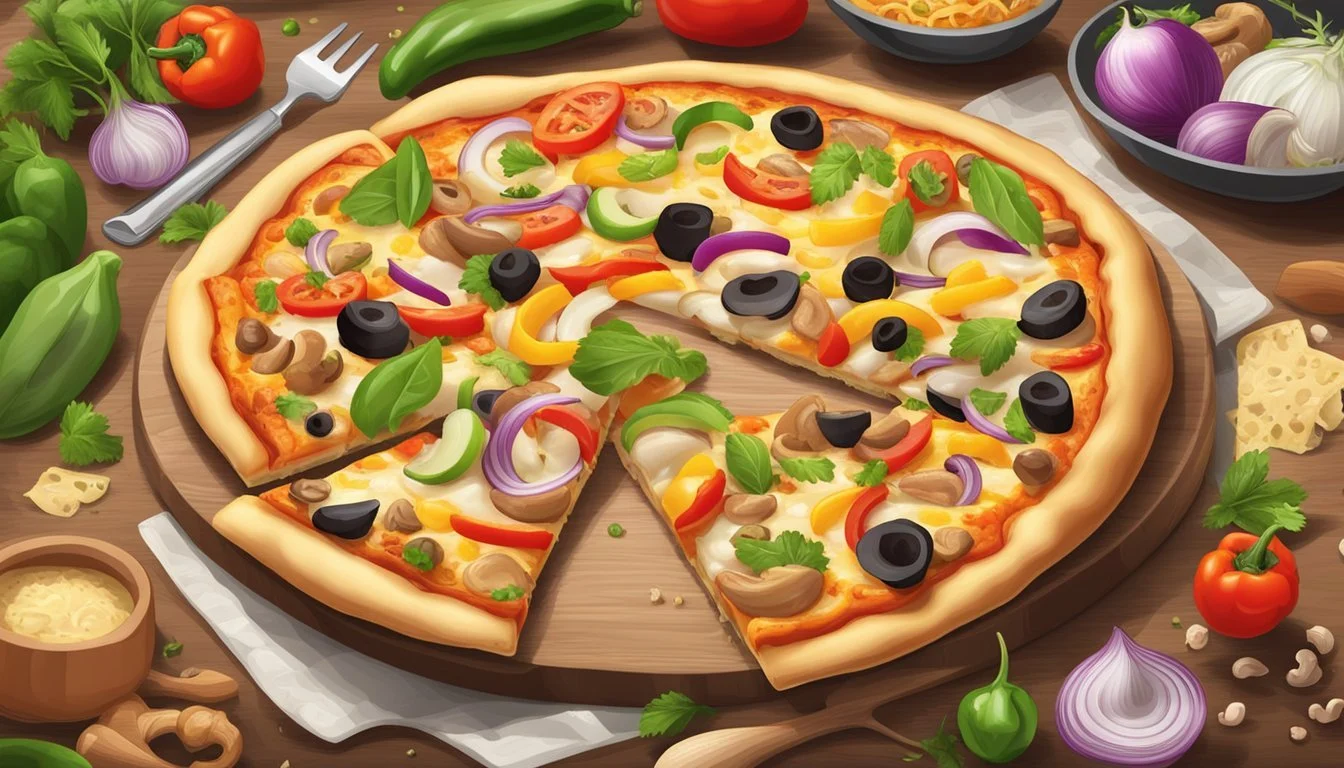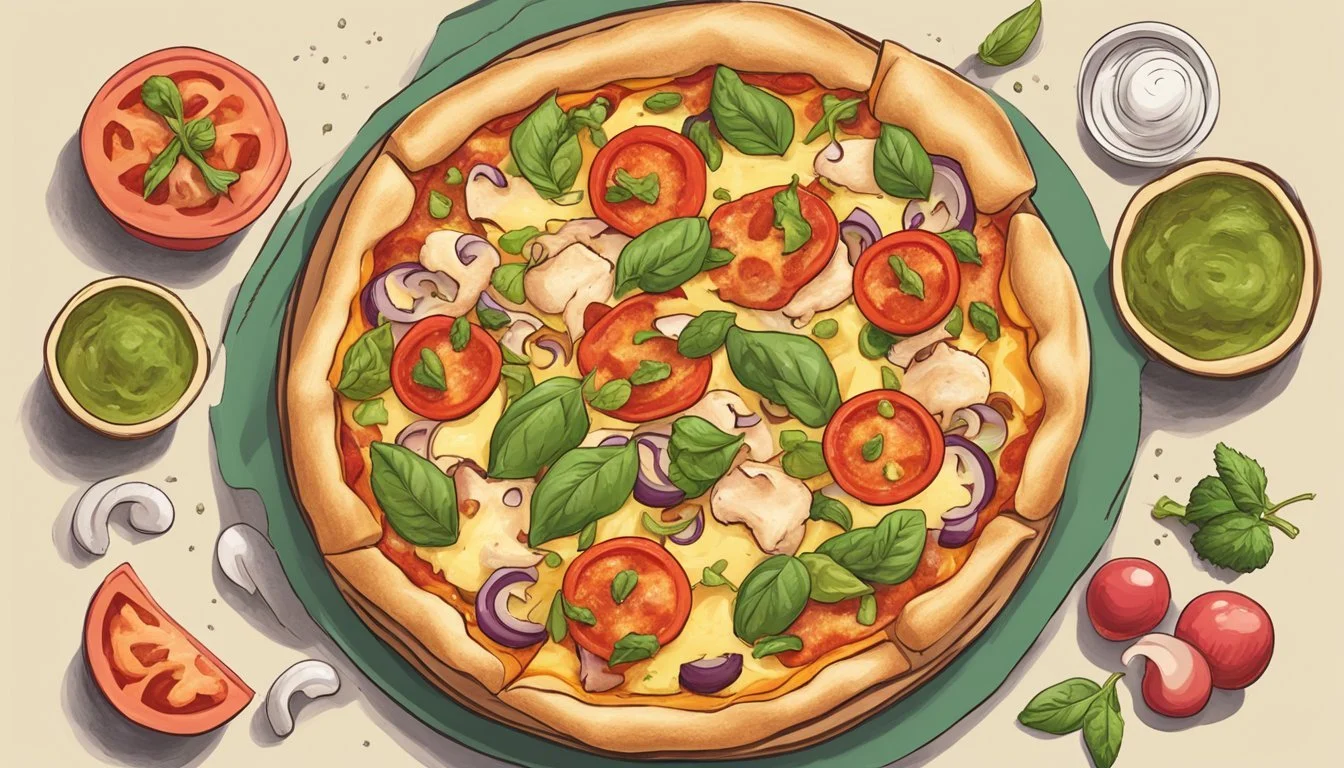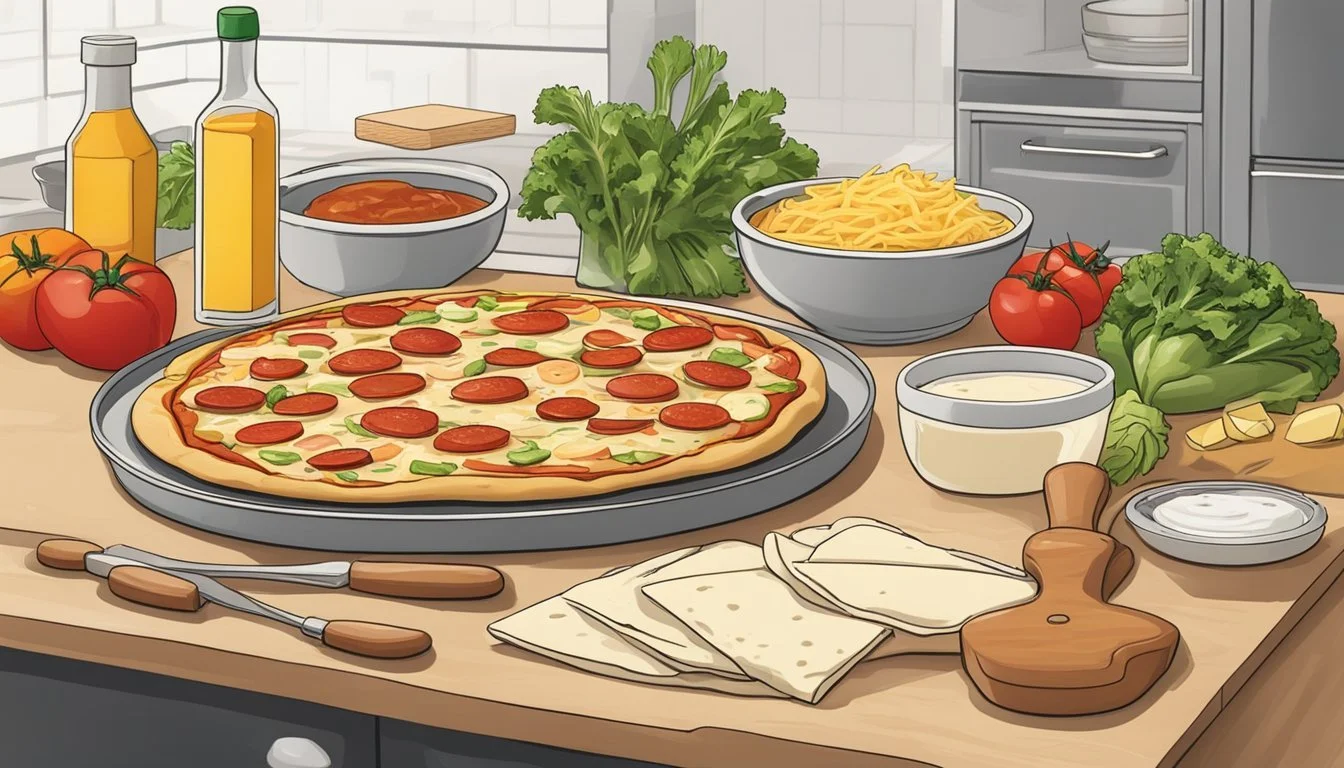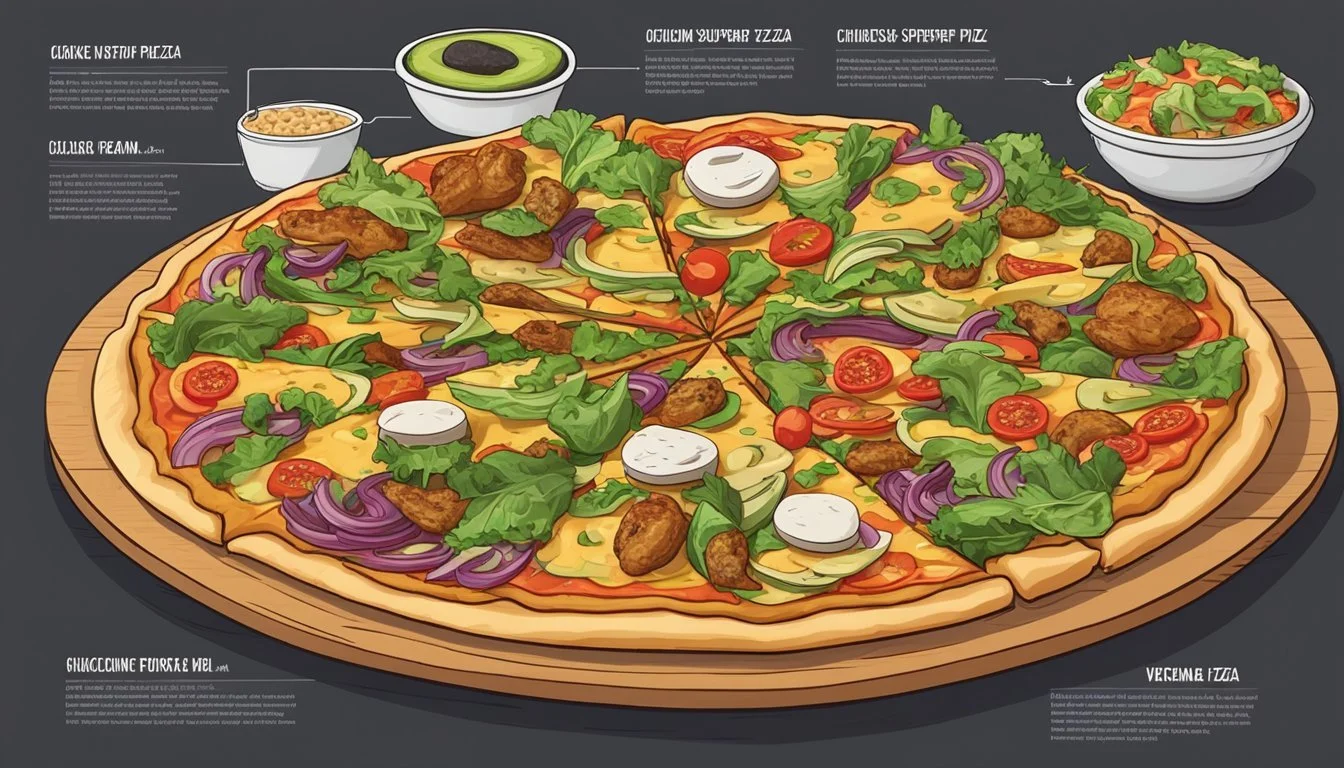Is Chicken Supreme Pizza Vegan?
Understanding Its Ingredients
When examining the concept of veganism, it's essential to understand that any product labeled as 'vegan' means it is free from animal-derived ingredients. This includes meats, dairy, eggs, and honey, among other animal-based products. Therefore, a traditional chicken supreme pizza, (What wine goes well with pizza?) which typically includes chicken, cheese, and sometimes other non-vegan toppings like sausage, would not be considered vegan.
However, the culinary landscape is rapidly evolving, and with the rise of plant-based diets, many pizzerias and food companies have started offering vegan versions of popular dishes, including chicken supreme pizza. These vegan variants are typically made with plant-based "chicken," dairy-free cheese, and at times, additional vegetable toppings to enhance flavor.
It's important for consumers seeking vegan options to look for specific indicators of vegan-friendly products, such as certifications or ingredient lists, to ensure the pizza they are considering aligns with their dietary preferences. As the market for vegan pizza flourishes, it continues to provide diverse and delicious alternatives that cater to the vegan lifestyle without compromising on the classic tastes of dishes like the chicken supreme pizza.
Understanding Veganism
Veganism involves a strict adherence to a diet excluding all animal products and by-products. Individuals following this lifestyle opt for plant-based alternatives to fulfill their dietary needs.
Principles of a Vegan Diet
A vegan diet is founded on the principle of abstaining from animal products. This includes meat, dairy, eggs, and honey. Instead, vegans emphasize the consumption of:
Fruits: Apples, berries, oranges, bananas, etc.
Vegetables: Leafy greens, root vegetables, cruciferous vegetables, etc.
Legumes: Beans, lentils, chickpeas, and peas.
Grains: Rice, quinoa, barley, and whole wheat products.
Nuts and Seeds: Almonds, flaxseeds, chia seeds, cashews.
Nutritional yeast, often used as a cheese flavor substitute, seitan, (What wine goes well with seitan?) known for its meat-like texture, and tofu, a soy-based protein-rich food, are also staple vegan ingredients.
Common Ingredients in Vegan Foods
When crafting vegan foods like vegan pizza, substitutes are used to replicate the textures and flavors traditionally found in their non-vegan counterparts:
Vegan Cheese: Often made from nuts (such as cashews or almonds), soy, or root vegetables, vegan cheese aims to mimic the taste and meltability of dairy-based cheese.
Plant-Based Proteins: Items such as tempeh, textured vegetable protein (TVP), or "mock meats" are used to provide the protein content usually sourced from animal meats.
Binders and Leavening Agents: Agar-agar, fruit pectin, and flax or chia eggs take the place of gelatin and eggs in vegan baking.
The use of these ingredients ensures that vegan food, including vegan pizza, meets the dietary and ethical considerations of the vegan lifestyle, while also providing variety and maintaining palatability.
Components of Chicken Supreme Pizza
Chicken Supreme Pizza is a popular variety that boasts a rich array of toppings over a sumptuous crust, layered with a flavorful sauce.
Pizza Dough and Crust
The foundation of Chicken Supreme Pizza is a crust that is both structured yet pliable. Traditional pizza dough consists of flour, water, yeast, salt, and often a touch of olive oil. For those who prefer convenience, a pre-made crust can be used, ensuring it is properly thawed and ready to handle the weight of the toppings.
Toppings and Additions
The topping is what sets the Chicken Supreme Pizza apart. Key components include:
Chicken: Often seasoned and pre-cooked, it serves as the primary protein.
Cheese: Typically, a generous blend of mozzarella and other cheeses like cheddar or parmesan is used to create a gooey, flavorful layer.
Supreme Toppings: A supreme pizza is not shy about variety. Standard additions include sliced red onion, olives, bell peppers, and sometimes even pieces of apple for a hint of sweetness.
Spices: A dash of spices brings out the flavors, including herbs like oregano and basil.
Pizza Sauce Variations
The sauce on a Chicken Supreme Pizza ties the components together. It usually begins with a tomato base that may be homemade or store-bought. Tomatoes are cooked down with garlic, onions, and herbs before being pureed into a smooth sauce. Variations might include a barbecue or a white cream sauce, depending on personal preference and regional tastes.
Veganizing Pizza
When crafting a vegan pizza, one must focus on plant-based alternatives for traditional meat and cheese toppings while embracing a wide array of vegetables and herbs to enhance flavor.
Substitutions for Meat and Cheese
Vegan pizza shuns the classic toppings of animal-derived cheese and meats, employing instead various vegan cheese alternatives such as those made from soy, nuts, and root vegetables. Brands like Violife and Follow Your Heart offer products that attempt to replicate the meltability and flavor profile of traditional cheeses. Nutritional yeast is another popular substitute that imparts a cheesy, umami flavor to pizzas.
For proteins, one might opt for plant-based meats, or simply use hearty vegetables such as cauliflower or chickpeas, seasoned with a blend of aromatic herbs and spices to mimic traditional meat flavors.
Vegan Pizza Toppings
A vegan pizza offers a canvas for a cornucopia of plant-based toppings. Beyond substitutes, there's an array of vegetables and fruits to be used:
Bell peppers
Mushrooms
Red onions
Sweet corn
Spinach
Olives
Herbs like basil, oregano, and rosemary add freshness and vibrance.
Homemade Vegan Pizza Considerations
Making homemade vegan pizza involves special attention to every component. The dough can be made from traditional wheat or from gluten-free alternatives like rice or chickpea flour. It should be noted that the essence of pizza dough's texture comes from the gluten in wheat, so gluten-free options may yield a different crust texture.
Yeast is a crucial element in pizza dough, and it's naturally vegan, which aids in the leavening process. When concocting a pizza sauce, sticking to a simple tomato base with herbs can assure it remains vegan-friendly. In summary, successful vegan pizza recipes hinge on thoughtful substitution and a celebration of plant-based variety.
Dietary Considerations
When exploring whether chicken supreme pizza can be vegan, it's important to consider the availability of gluten-free and allergy-friendly options as well as the nutritional profile of the plant-based ingredients used.
Gluten-Free and Allergy-Friendly Options
For individuals with gluten intolerance or celiac disease, gluten-free pizza bases made from alternative flours such as rice or soy are essential. Vegan pizzas often cater to this need, but it's crucial to verify that the product is certified gluten-free to avoid cross-contamination. Similarly, those with allergies should carefully examine ingredient lists for common allergens like soy or wheat and ensure that the product is produced in an allergen-free facility.
Nutritional Aspects of Vegan Pizzas
Vegan pizzas replace traditional cheeses with plant-based alternatives, often incorporating nutritional yeast to achieve a savory, cheese-like flavor. These pizzas may provide a variety of vitamins and minerals, but one should consider the nutritional balance, including the presence of protein and fiber. The nutritional profile can vary widely depending on the specific toppings and cheese substitutes used. It's recommended to review the ingredients for items that contribute to a well-rounded diet.
Pizza Preparation Techniques
When crafting a vegan pizza, selecting the right cooking method and preparing the dough correctly are crucial steps to ensure the pizza's quality and adherence to vegan standards.
Cooking with a Pizza Stone
A pizza stone provides an evenly heated surface, ideal for achieving a crispy crust on vegan pizzas. The stone should be preheated in the oven at the highest temperature—typically between 475°F and 500°F (245°C and 260°C)—for at least 30 minutes before sliding the pizza onto it using parchment paper.
Using a Pizza Oven or Conventional Oven
A pizza oven is designed to reach higher temperatures than a conventional oven, which can cook pizzas quickly and create a charred crust that's desirable in pizza. However, a conventional oven can still produce excellent vegan pizzas; just ensure it's preheated adequately. Whether using a high-powered pizza oven or a standard kitchen oven, monitoring the pizza is key to prevent burning, especially considering the delicate nature of some vegan cheese alternatives.
Tips for the Perfect Vegan Crust
When making the homemade pizza dough, aim for a balance between chewy and crispy by using a high-gluten flour to give the crust structure. Here are a few concise tips for vegan pizza recipes:
Hydration: Keep the dough's hydration around 60-70% to ensure the dough is workable and not too dense.
Kneading: Knead the dough until smooth and elastic, which typically takes about 10 minutes by hand.
Proofing: Allow the dough to proof until it doubles in size, which usually takes 1-2 hours in a warm environment.
Vegan Toppings: Use fresh vegetables and bake them alongside the crust for better texture and flavor.
Vegan Cheese: Choose a vegan cheese that melts well and complements the other pizza toppings. (What wine goes well with pizza toppings?)
Stuffed Crust: For a stuffed crust, roll the edges of the crust over strips of vegan cheese before baking.
Answering Common Questions
In this section, we address frequent inquiries concerning vegan pizza and clear up common misunderstandings related to its ingredients and preparation.
FAQs About Vegan Pizza
Is chicken supreme pizza vegan?
No, chicken supreme pizza is not vegan as it typically includes chicken and cheese, which are animal-derived products.
Can vegan cheese be used on pizza?
Yes, vegan cheese can be used on pizza and is made from various plant-based ingredients such as nuts, soy, or tapioca.
Where can I find vegan pizza recipes?
Vegan pizza recipes are available online, in cookbooks, and sometimes provided by food blogs and vegan communities.
Resolving Misconceptions
Misconception: Vegan pizza isn't flavorful.
Fact: Vegan pizza can be just as flavorful as its non-vegan counterparts, especially when quality vegan cheese and a variety of toppings are used.
Misconception: You can't get a good cheese pizza that's vegan.
Fact: With the advancement in food technology, excellent vegan cheese alternatives are available, allowing for delicious vegan cheese pizzas.
Additional Vegan Meal Options
When exploring the world of vegan cuisine, it’s exciting to note that there are copious options available beyond the typical fare. Vegan appetizers and complete meals can be customized with a variety of plant-based ingredients to satisfy any palate.
Vegan Appetizers and Sides
Vegan Garlic Bread: One can easily prepare vegan garlic bread by using dairy-free butter, fresh garlic, parsley, and a pinch of salt spread over a baguette and toasted until golden.
Potato Wedges: Baked potato wedges seasoned with olive oil, rosemary, and paprika make for a mouthwatering vegan side dish.
Buffalo Cauliflower Bites: Bite-sized cauliflower florets can be dipped in a vegan-friendly buffalo sauce and baked to crispy perfection, offering a plant-based take on buffalo wings (What wine goes well with buffalo wings?).
Making a Complete Vegan Meal
A complete vegan meal often includes a balance of protein, vegetables, and grains or legumes. Here are elements one might consider:
Vegan Pizza: For the main course, vegan pizza options abound. A classic Margherita pizza (What wine goes well with margherita pizza?) with vegan cheese and fresh basil remains popular.
Frozen Pizza Alternatives: For convenience, one might select a frozen variety of vegan pizza that's quick and easy to prepare at home.
Complementary Sides: To round out the meal, consider adding a side of garlic bread and a fresh salad with a range of colorful veggies.
Takeaway: Enjoying Vegan Pizza
Vegan pizza is a delightful option for those adhering to a plant-based diet, and fortunately, it's becoming more commonplace in takeaway venues. One can easily find budget-friendly choices so eating out or ordering in doesn't have to break the bank.
Finding Vegan Pizza Options: When searching for vegan pizza, it's important to identify pizzerias that offer plant-based cheese alternatives such as dairy-free mozzarella. Extra toppings like mushrooms, green peppers, and onions can add depth and variety to the flavor profile.
Personalizing Your Pizza:
Enhance the flavor with a choice of additional toppings like artichokes, (What wine goes well with artichokes?) olives, or pineapple.
Opt for whole-grain or gluten-free crusts if available for a healthier approach.
Budget Considerations:
Check for special deals or vegan-specific promotions.
Sharing larger pizzas can provide savings compared to individual orders.
Ordering extra can mean delicious leftovers for the next day, maximizing value.
For those who enjoy creating their own pizza experience, some brands offer takeaway vegan pizzas that just require baking at home. Preparation is usually simple: preheat the oven, remove packaging, and bake the pizza until it's golden brown.
Choice and Quality: Vegan pizzas can be just as cheesy and flavorful as their traditional counterparts. Specialty chains may offer innovative vegan creations with a blend of savory toppings and rich, cruelty-free cheeses. Mainstream pizza franchises are also catching on, broadening their menus to include vegan options.
By exploring these various avenues, diners and takeaway enthusiasts can relish in vegan pizza's advancing landscape, making it easier than ever to enjoy a delectable, plant-based slice.










